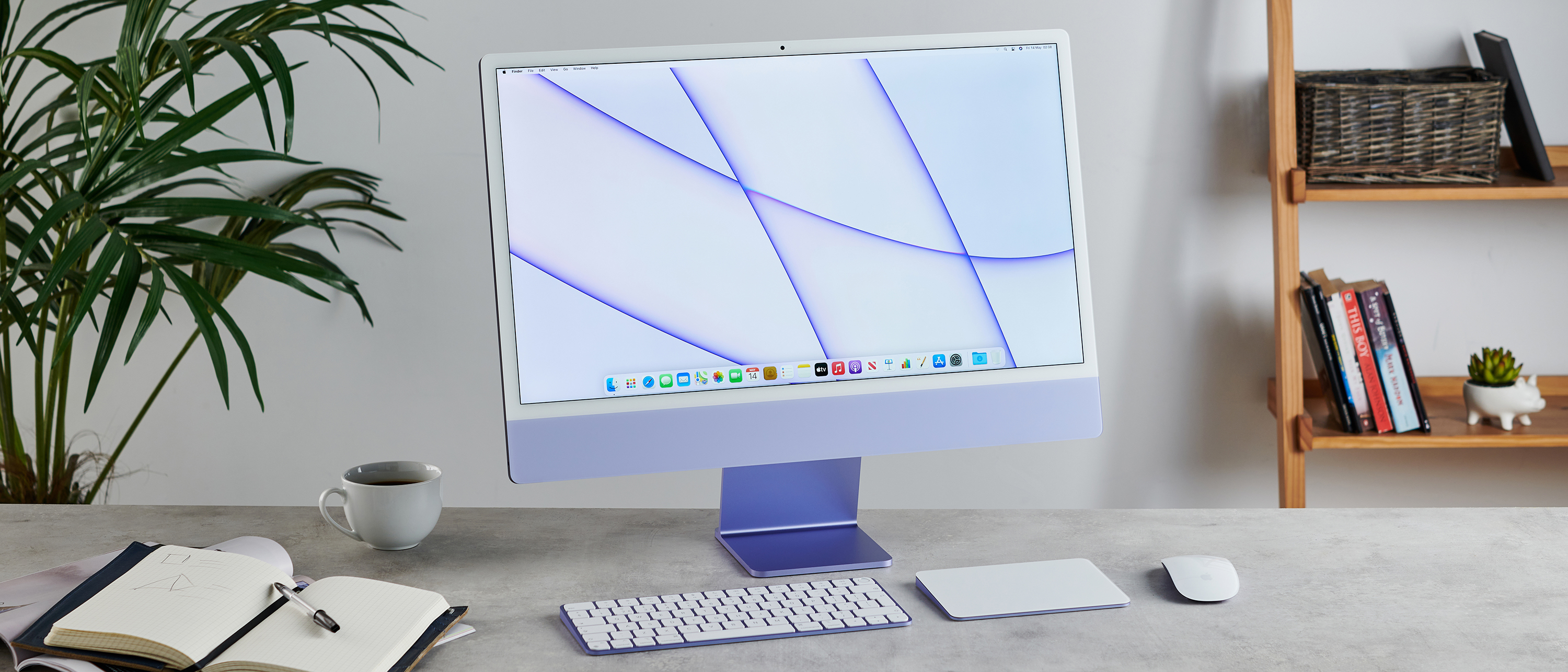TechRadar Verdict
The iMac (24-inch, 2021) is an improvement on its 21.5-inch predecessor in pretty much every way. It’s got a better, larger screen, a new modern and colorful design, and delivers excellent performance – all for the same price. If you’ve been eyeing up an all-in-one for work and play, this is an excellent choice.
Pros
- +
Excellent screen
- +
Striking new design
- +
Fantastic webcam
- +
Very good performance
Cons
- -
Lack of ports remains
- -
Charging the mouse is still awkward
- -
Mac mini may offer better value for some
Why you can trust TechRadar
Two-minute review
Apple has managed to reinvent one of its most iconic products with the release of the iMac (24-inch, 2021) by not only improving upon its predecessor but doing so in stunning fashion. Where the previous iMac had started to look outdated with its hand-me-down looks, the 2021 model is refreshing with its modern and svelte shape.
Part of this design overhaul is the size of the screen. The 21.5-inch display is now gone, replaced by the larger 24-inch one (though the 27-inch iMac is still available). While the screen is much larger, the dimensions of the iMac (24-inch, 2021) is not remarkably different from its predecessor, coming in at 54.7 x 46.1cm with a depth of 14.7cm while the prior 21.5-inch model measures 52.8 x 45cm with a depth of 17.5cm. Incredibly, the screen on this iMac is only 11.5mm thin.
So, this model gives you all that extra screen real estate while not taking up much more desk space. And, considering the fact that it is slimmer and lighter as well – the 24-inch model weighs 4.48kg compared to its predecessor’s 5.68kg – it’s an even more portable and flexible all-in-one computer.
Apple has also released the iMac (24-inch, 2021) in seven vibrant colors, which harkens back to the days of the iMac G3 and shows a confidence and playfulness from Apple that's very welcome. In a nice touch, the Magic Keyboard, Mouse and Trackpad all come in the same color as the iMac you choose, and elements of the macOS Big Sur user interface are also in the same color. It’s a lovely overall effect.
The iMac achieves the feat of being almost as small (and thinner and lighter) than its smaller predecessor in large part due to perhaps the biggest change under the hood: it's powered by the Apple M1 chip, rather than Intel hardware. As we’ve seen with the MacBook Air (M1, 2020), MacBook Pro 13-inch (M1, 2020) and Mac mini (M1, 2020), this move to Apple’s own silicon has largely been a success, and after the iMac 27-inch was a no show at the most recent Apple March event, the iMac 24-inch remains the only iMac with M1-class hardware.
What's more, it looks like the iMac 27-inch is effectively discontinued, so this will be the only iMac that anyone is going to be getting for a while, which makes it all the more important that the iMac 24-inch deliver the goods. Fortunately for everyone involved – other than 27-inch iMac fans – the iMac 24-inch does and then some.
The macOS Big Sur operating system is fast and snappy – something you should also see with macOS Monterey if you choose to take advantage of the free upgrade – and apps designed for the M1 hardware run brilliantly. Even older Intel-based apps run well thanks to Apple’s Rosetta 2 tool, and you can also run iOS apps and games, giving you access to thousands of titles.
Thanks to the gorgeous 4.5K Retina screen, great speakers and a fantastic webcam, working and creating on this iMac is a joy. This isn’t the most powerful PC out there, however, as it doesn't come with a dedicated graphics card, and nor can you use an external GPU. Memory is also capped at 16GB, so if you’re looking for a powerful workstation PC this may not be for you.
However, there’s a whole lot to love here – and best of all, with a starting price of $1,299 / £1,249 / AU$1,899, the iMac (24-inch, 2021) offers all these improvements for the same price as its predecessor.
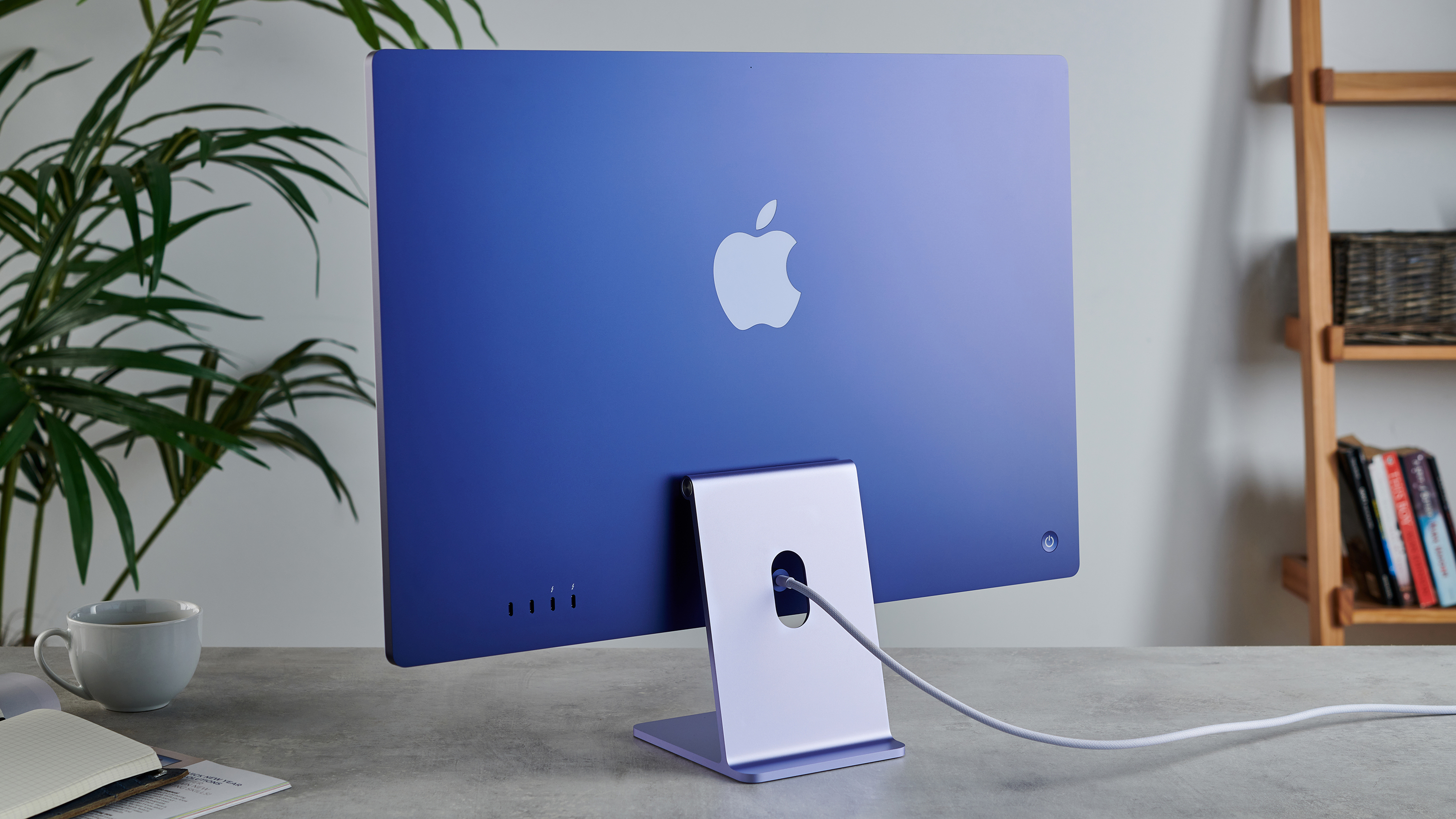
Apple has also released the iMac (24-inch, 2021) in seven vibrant colors, which harkens back to the days of the iMac G3 and shows a confidence and playfulness from Apple that's very welcome. In a nice touch, the Magic Keyboard, Mouse and Trackpad all come in the same color as the iMac you choose, and elements of the macOS Big Sur user interface are also in the same color. It’s a lovely overall effect.
This iMac achieves the feat of being almost as small (and thinner and lighter) than its smaller predecessor in large part due to perhaps the biggest change under the hood: it's powered by the Apple M1 chip, rather than Intel hardware. As we’ve seen with the MacBook Air (M1, 2020), MacBook Pro 13-inch (M1, 2020) and Mac mini (M1, 2020), this move to Apple’s own silicone has largely been a success. The macOS Big Sur operating system is fast and snappy, and apps designed for the M1 hardware run brilliantly. Even older Intel-based apps run well thanks to Apple’s Rosetta 2 tool, and you can also run iOS apps and games, giving you access to thousands of titles.
Thanks to the gorgeous 4.5K Retina screen, great speakers and a fantastic webcam, working and creating on the new iMac is a joy. This isn’t the most powerful PC out there, however, as it doesn't come with a dedicated graphics card, and nor can you use an external GPU. Memory is also capped at 16GB, so if you’re looking for a powerful workstation PC this may not be for you.
However, there’s a whole lot to love about this iMac – and best of all, with a starting price of $1,299 / £1,249 / AU$1,899, the iMac (24-inch, 2021) offers all these improvements for the same price as its predecessor.
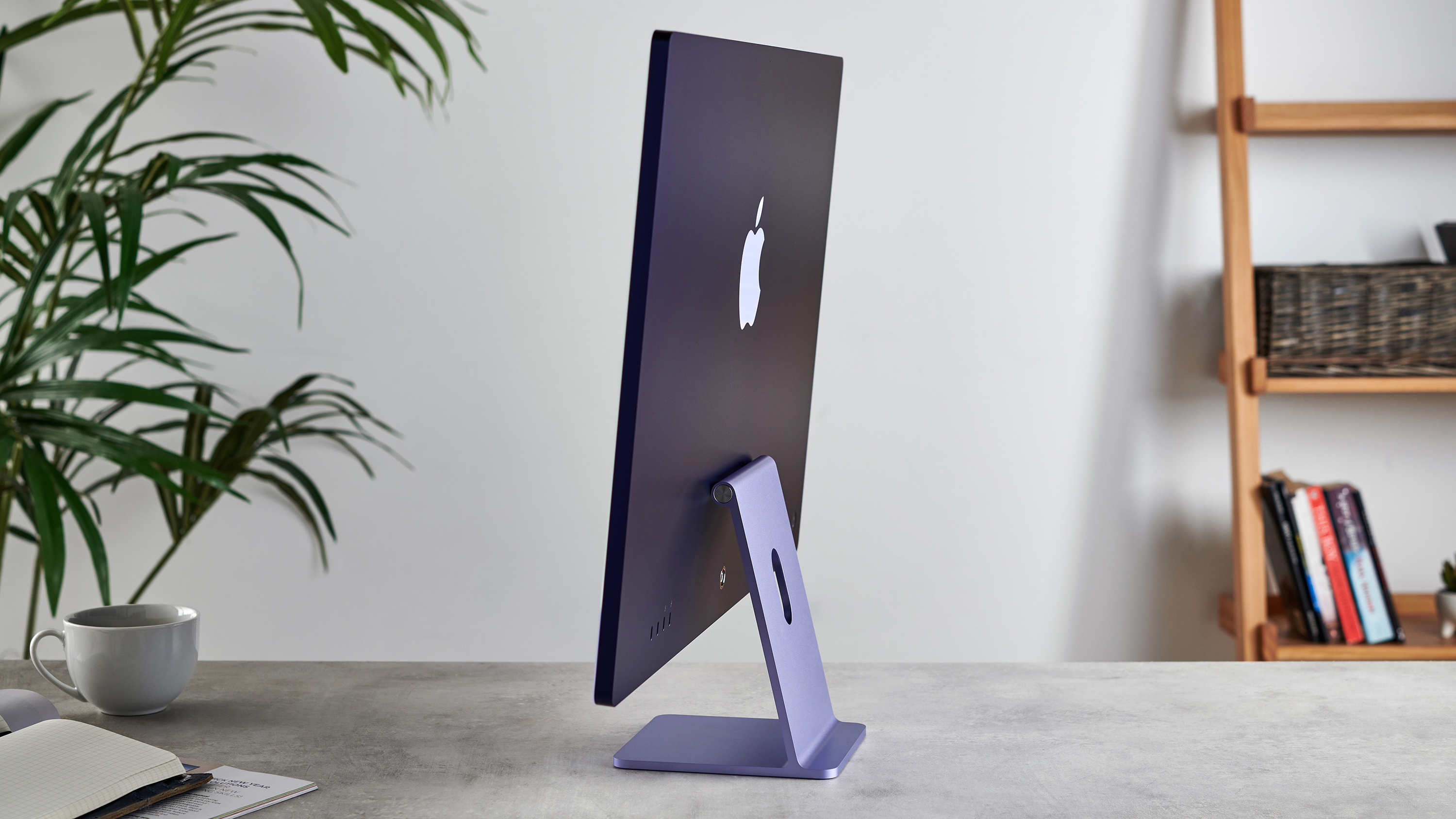
Price and availability
Here is the iMac (24-inch, 2021) configuration sent to TechRadar for review:
CPU: Apple M1 (8-core)
Graphics: Integrated 8-core GPU
RAM: 16GB Unified LPDDR4 RAM
Screen: 24-inch, 4.5K 4,480 x 2,520 Retina display (IPS, 500 nits brightness, wide color P3 gamut)
Storage: 512GB SSD
Ports: 2x Thunderbolt USB 4 (USB-C), 2x USB 3 (USB-C), 3.5mm headphone jack
Connectivity: Gigabit Ethernet, Wi-Fi 6, Bluetooth 5.0
Camera: 1080p FaceTime HD webcam
Weight: 9.88 pounds (4.48kg)
Size: 18.1 x 21.5 x 5.8 inches (46.1 x 54.7 x 14.7cm; W x D x H)
The iMac (24-inch, 2021) became available to pre-order not long after it was first announced, on April 30 2021, with the first customers getting their machines on May 21.
The good news is that the eye-catching redesign and the shift to the Apple M1 chip doesn't come with a price increase. The Apple iMac (24-inch, 2021) price remains $1,299 / £1,249 / AU$1,899 for the base model, which gets you a 7-core M1 with a 256GB SSD and 8GB of RAM. You can also step up to a $1,499 / £1,449 / AU$2,199 configuration, which will get you more color options and USB-C ports, and will also bump you up to the full 8-core version of the Apple M1, although it comes with the same SSD and RAM.
As with previous models of the iMac, you can then upgrade certain specs to suit your needs, for example by adding more RAM or storage space.
A fully-specced-out option for the iMac comes with 16GB of RAM and 2TB of SSD storage, and costs $2,499 / £2,449 / AU$3,699.
The iMac comes with an improved Magic Keyboard (more on that in a bit) and Magic Mouse. However, if you want to swap out the mouse for the Magic Trackpad, it’ll cost you an extra $50 / £50 / AU$70, while if you want both the Magic Mouse and the Magic Touchpad that’ll add $129 / £129 / AU$179.
Still, the base price for this iMac is certainly competitive, and we’re glad that Apple hasn’t increased the price over that of the previous model, despite the upgrades. It’s also considerably cheaper than the now-discontinued iMac Pro, which started at $4,999 (£4,899, AU$7,299).
While the iMac (24-inch, 2021) looks like it’ll be able to offer similar performance to the similarly specced MacBook Pro 13-inch (M1, 2020), it won’t be able to compete with the kind of power the iMac Pro was offering. It also seems that the 16GB RAM limit of the M1 chip strikes again here; if you’re after more memory, this isn’t the PC for you.
It’s also worth noting that the most affordable model of the new iMac (24-inch, 2021), which comes with an 8-core CPU and 7-core GPU, also comes in fewer colors (four), has only two Thunderbolt/USB 4 ports (missing two USB 3 ports of the other models), has no Gigabyte Ethernet, and no Touch ID sensor on the Magic Keyboard.
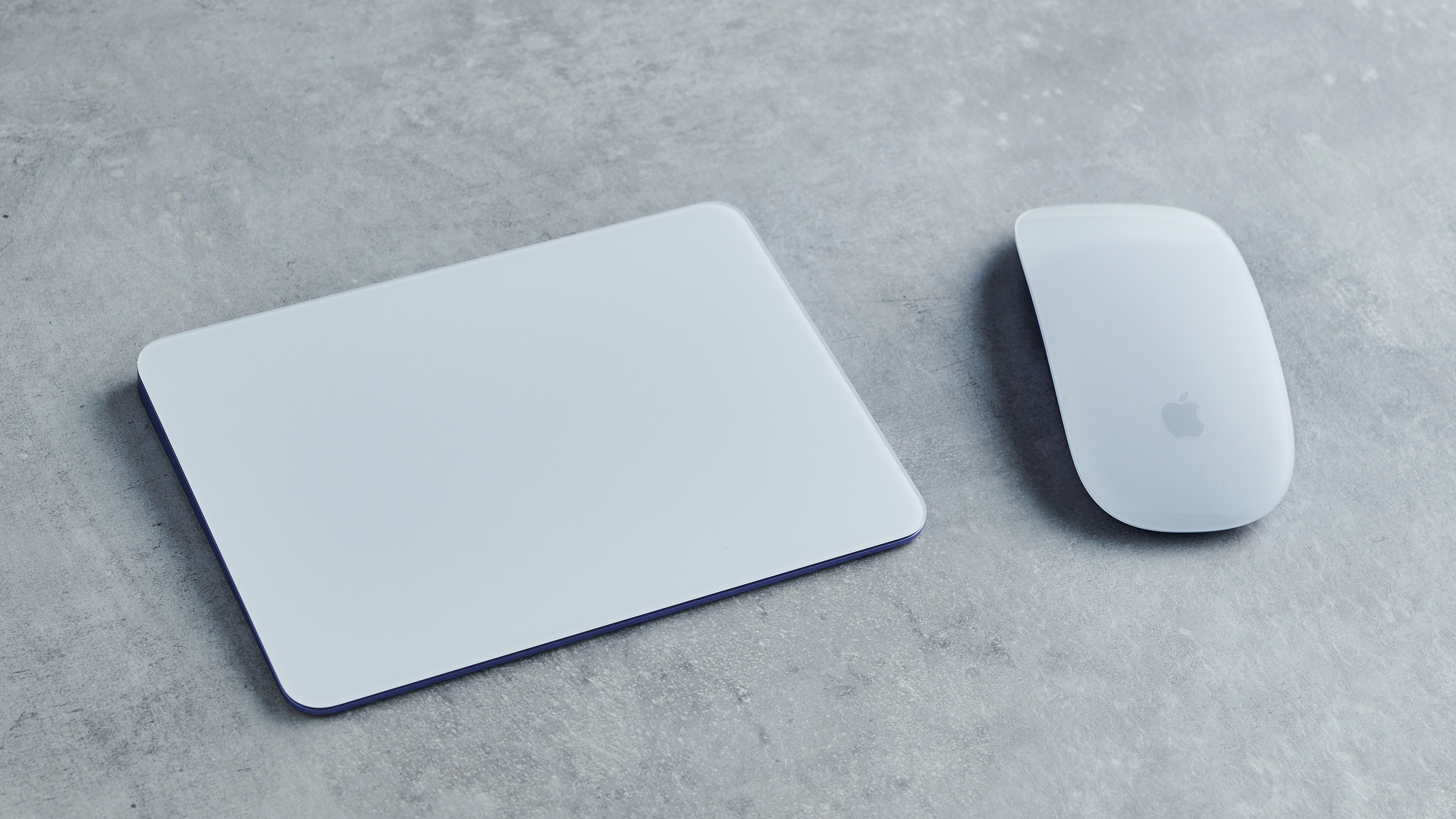
Design
In our previous reviews of the most recent iMacs, we lamented the fact that Apple was sticking to a design that was largely unchanged since 2009 (and that design was itself only a slight change from the 2007 iMac). While other makers of all-in-one PCs, like Microsoft and Lenovo, were doing exciting things with the form factor, the iMac was starting to feel outdated. Its iconic design had become more of a curse than a blessing.
So we’re very pleased to see that Apple has made some of the most dramatic changes to the design of the iMac in recent history, giving it a bold and modern makeover, while still keeping that quintessential Apple look.
From all of the promotional materials, and the photos in this review, the most obvious change you’ll probably have noticed is the overall look of the iMac. It comes in seven colors, allowing you to choose the finish that's right for your aesthetic. The Apple iMac colors are: green, yellow, orange, pink, purple, blue and silver (although you're limited to green, pink, blue and silver for the entry-level model). If you remember back in the late 90s and early 2000s, this color variety was the norm for the iMac, before Apple shifted to the same gray color scheme for every computer it launched.
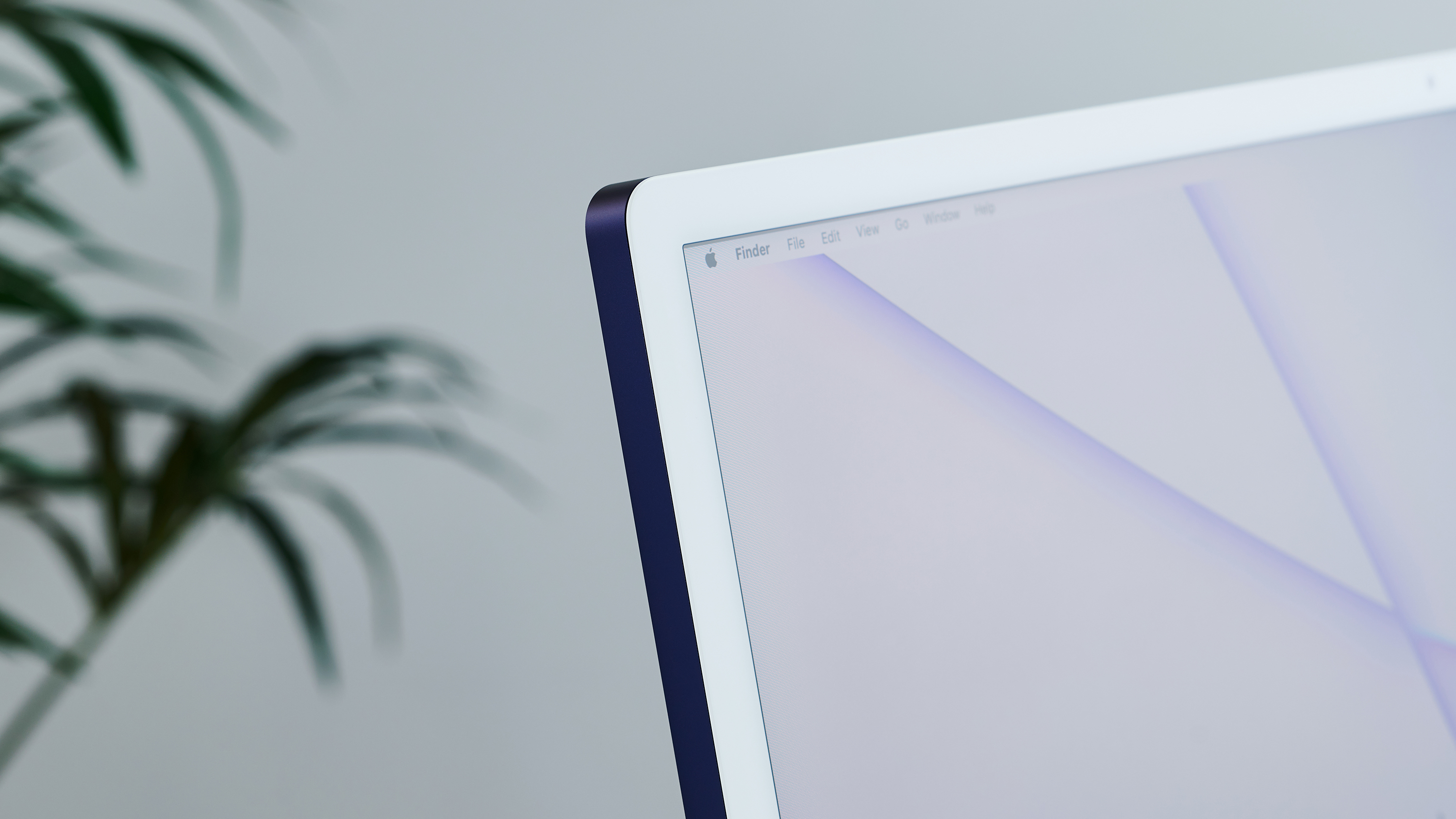
But the iMac (24-inch, 2021) hasn’t just been given a fresh lick of paint. It has a slightly more rectangular design that’s reminiscent of the latest iPhones, and it’s now thinner and more compact than ever, thanks in large part to the inclusion of the Apple M1 chip that powers this iMac. This has allowed Apple to drastically shrink down the Logic Board, reducing the volume of the iMac by 50%, and it's just 11.5mm thin. As we've mentioned, that's all while increasing the display to 24 inches, up from the 21.5 inches that this tier of iMac has been in the past. In fact, the total footprint of this iMac has been reduced by 30%, with dimensions of 18.1 x 21.5 x 5.8 inches (46.1 x 54.7 x 14.7cm).
It’s also significantly lighter, at 4.48kg (9.88 pounds) compared to the 5.68kg (12.52 pounds) of the previous 21.5-inch iMac. This means that when you take the iMac out of the box, the biggest design change you’ll notice is just how light this thing is. It’s seriously impressive, and combined with the reduced depth and footprint, it means the 2021 iMac can be easily carried around, and installed almost anywhere in your home or office.
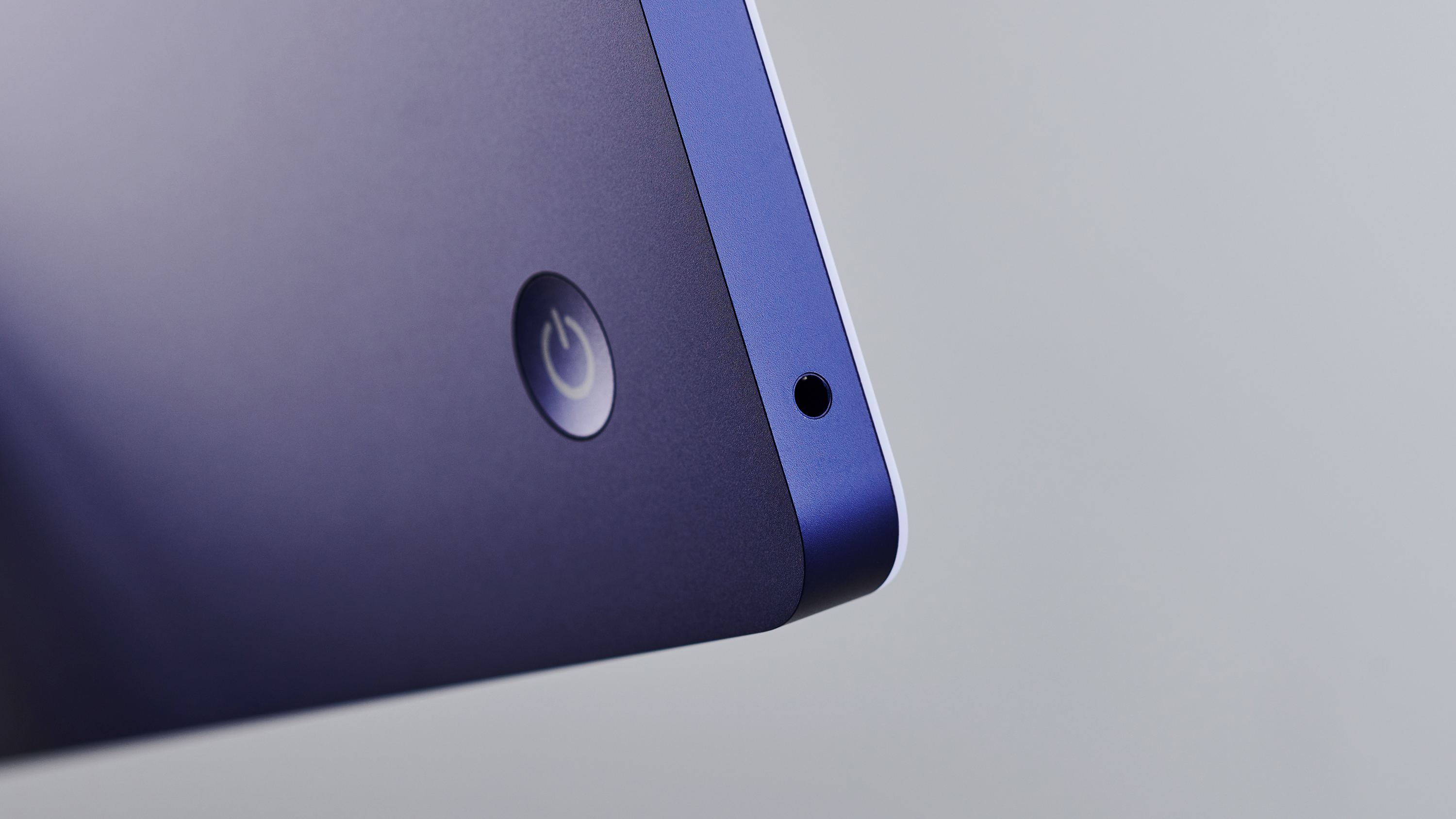
By their nature, all-in-one PCs are more compact and easier to set up than traditional PCs, as there’s no need to connect cables to a monitor, and thanks to the wireless keyboard and mouse included with the new iMac (and the Magic Touchpad in some configurations), you only need to plug in one cable to get up and running – the power supply.
And even here Apple has made some pretty neat changes, highlighting the kind of attention to detail its designers have lavished on the new iMac. The power adapter has been redesigned, so it now easily connects to the iMac via magnets, in a welcome return of Apple’s MagSafe technology. This makes it quick and easy to insert the cable, as its placement on previous iMacs could make that tricky.
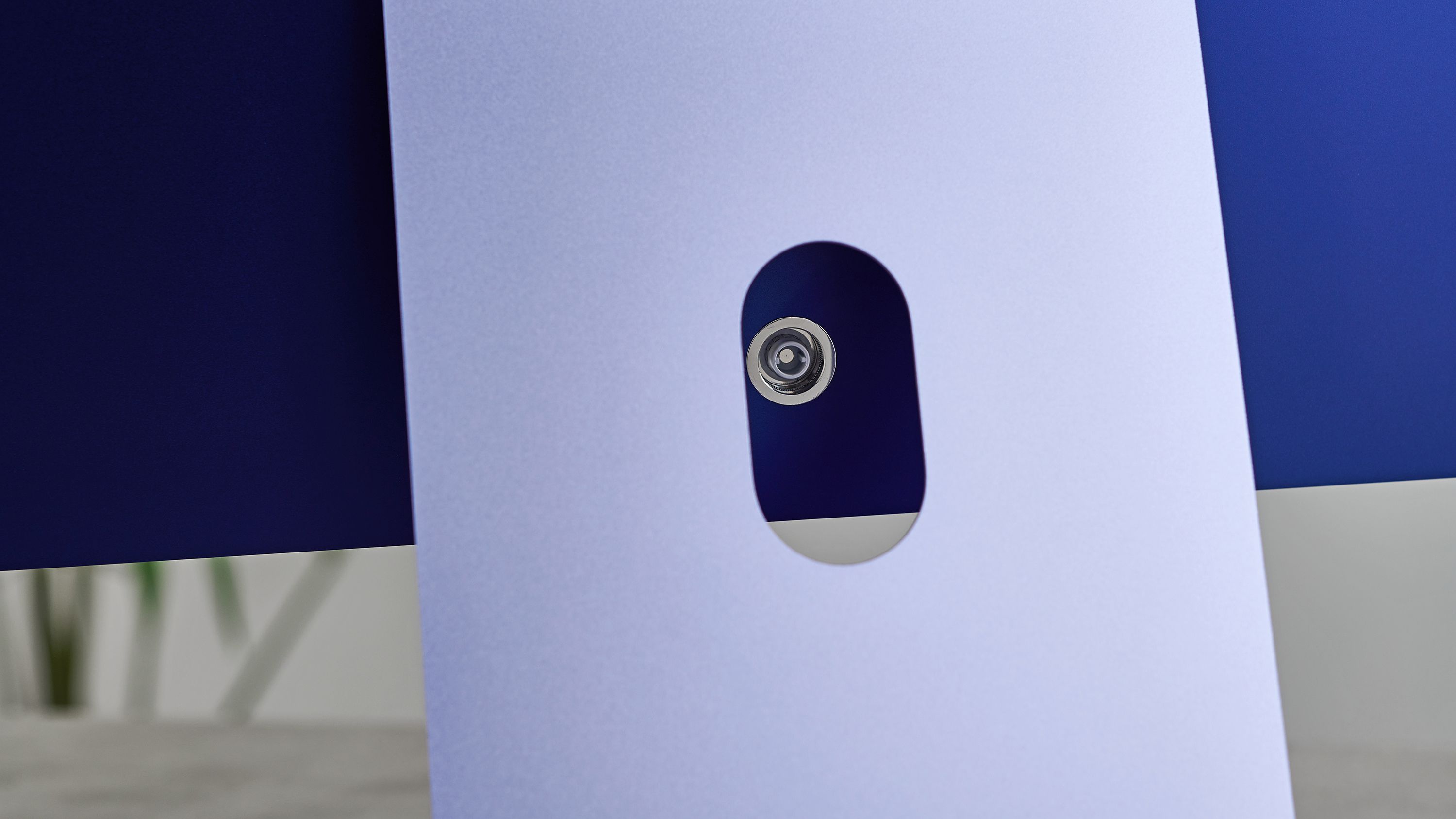
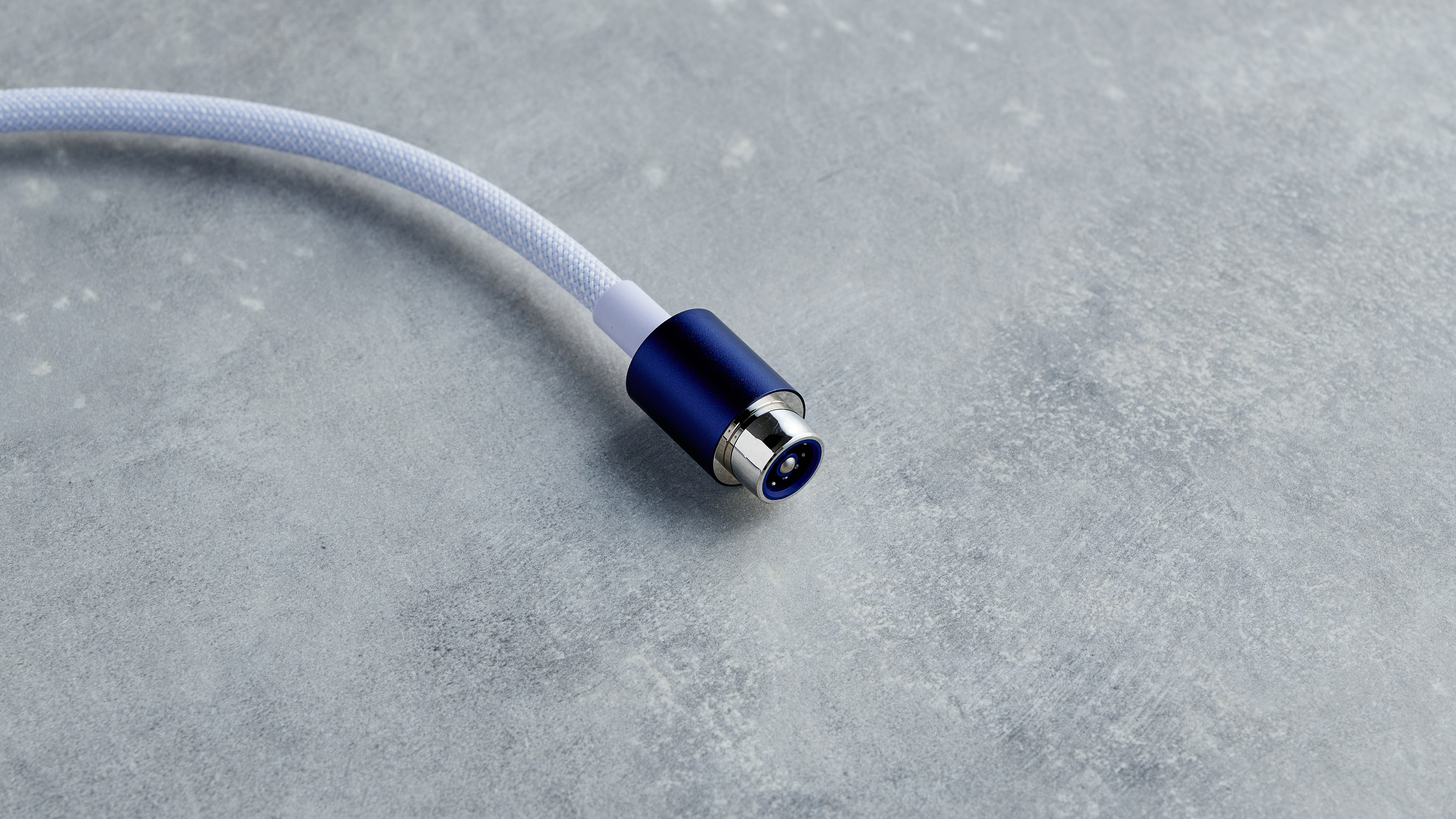
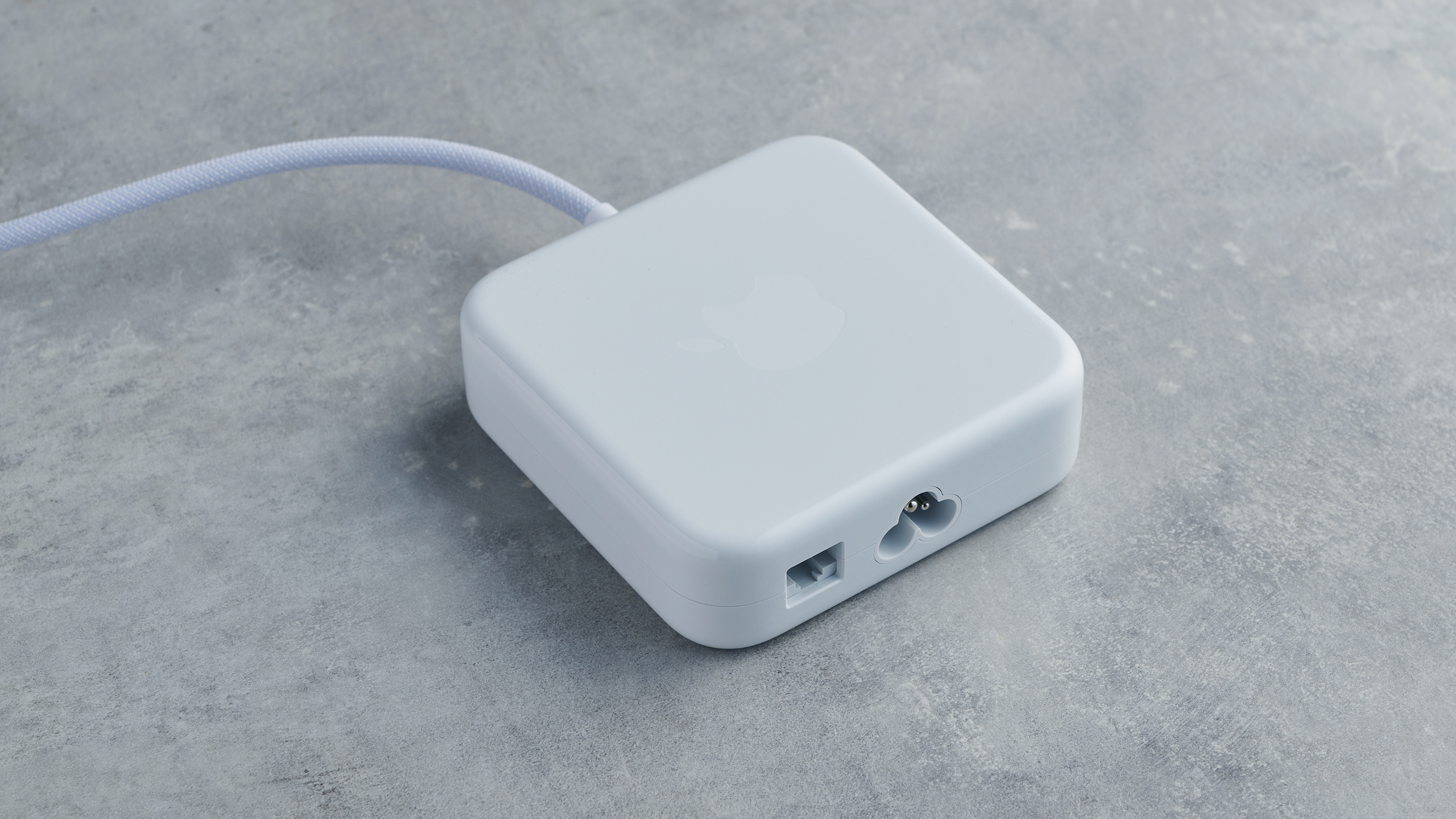
Also, on the higher-end models the power adapter features a Gigabit Ethernet port, so you can just plug your wired network cable into this, which is another nice touch. The power adapter also features a 2-meter woven cable, which compliments the color choice of your iMac. It’s an attractive and useful way of plugging in and powering your iMac.
Like the power cable, the Magic Keyboard, Magic Mouse and Magic Touchpad are all color-coordinated as well; and when you fire up macOS Big Sur (the latest version of the Mac operating system), you’ll notice that certain elements of the user interface, such as the desktop background, use the same color your iMac.
These may be little details, but they all help to give the 2021 iMac a unified look and feel – and make it feel more personal as well, as you’re the one who picked the color scheme. It instantly made us warm to the iMac more than we have to any previous model, and made it feel less like a productivity tool and more of a fun gadget.
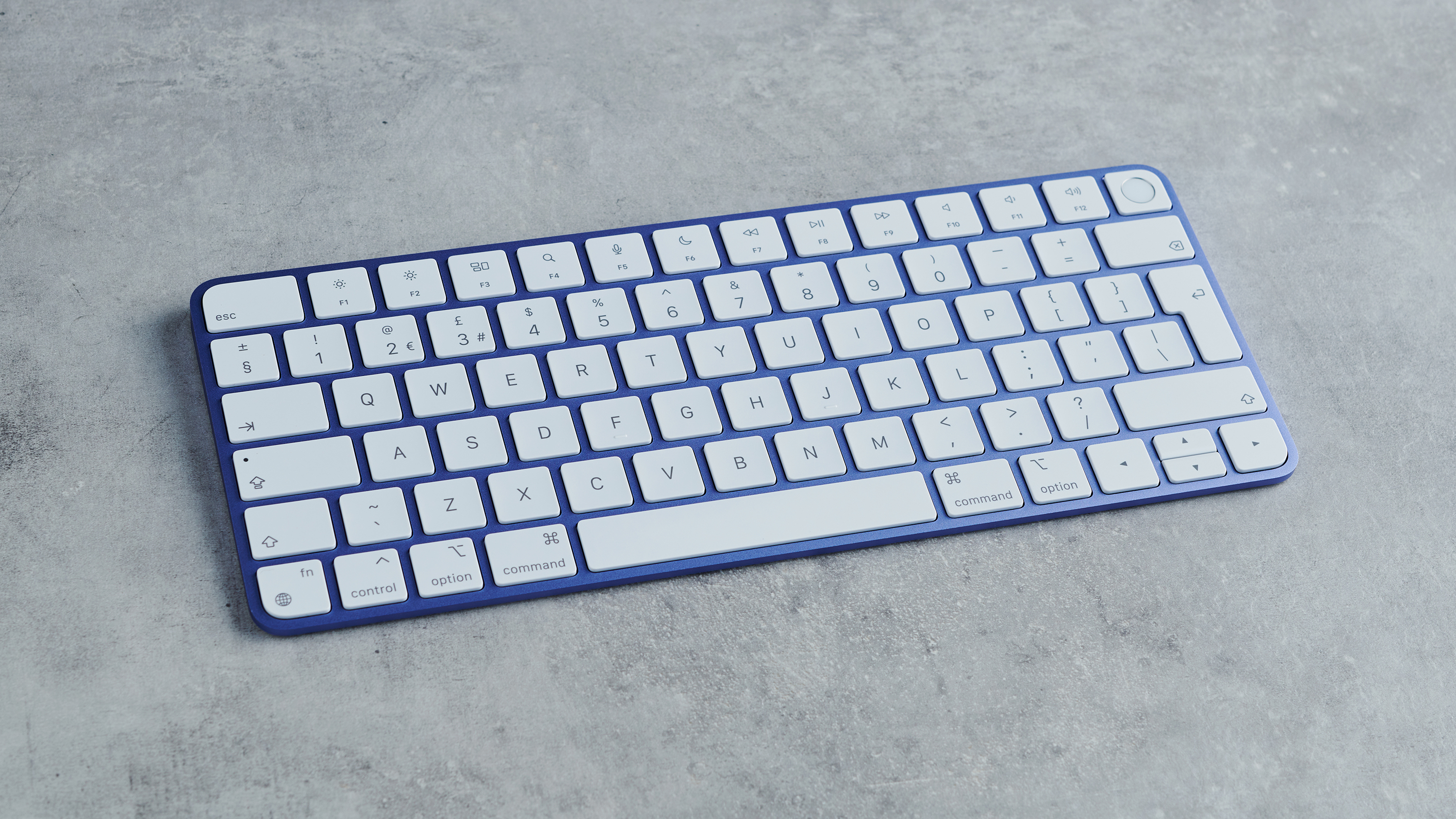
Apart from the new colors, the Magic Mouse and Trackpad haven’t seen any major changes – which may be either a good or bad thing, depending on how well you got on with them in the past. We’ve never been huge fans of the Magic Mouse, much preferring to use a mouse with separate buttons and a scroll wheel – which of course you can do if you want (check out our best mouse guide for ideas).
It also means that Apple is sticking with its baffling decision to put the charging port for the mouse on the underside of the device. This means that when you're charging the mouse you can’t actually use it, which can be pretty frustrating, and it’s a little strange that this design oversight remains when Apple has been so thorough with the rest of the iMac’s revamp.
However, the Magic Keyboard has had some big changes. It comes with new buttons for emoji, Spotlight, Dictation, Do Not Disturb and instant lock (accessed via the Fn key and the F keys at the top). Also, on the higher-end iMac models, the keyboard now comes with Touch ID. This works in a similar way to Touch ID on a MacBook or iPhone – after setting it up, you rest your finger on the Touch ID button, and you can instantly log into the iMac. This button can also be used for switching between user accounts, and for securely paying for things online using Apple Pay.

Due to the keyboard being wireless, Apple has assured us that the transmission of your fingerprint is done safely and securely, and during our time testing the 2021 iMac we found it worked well, quickly identifying our fingerprint and logging us in with no perceptible delay due to the wireless connection.
The fresh design of the iMac (24-inch, 2021) also brings changes to the array of ports around the back. On the base model you get two Thunderbolt/USB 4 Type-C ports, which offer 40Gb/s data transfer speeds. On the more expensive models you also get two additional USB 3 Type-C ports, with 10Gb/s data speeds. The difference in performance between these ports means you’ll want to make sure that you plug your peripherals, especially external hard drives, into the right ports. The faster USB 4 ports are indicated by lightning bolt icons above them, but these could be a little hard to identify if you’re trying to find them on the rear of the iMac in a shadowy corner of a room.
The power button remains in the left-hand corner of the back of the iMac, but the headphone port has been moved to the left-hand side of the display. This makes it easier to access, and there’s been speculation that Apple needed to put it there because of just how thin the iMac is, as this meant it couldn't put the audio port on the back.
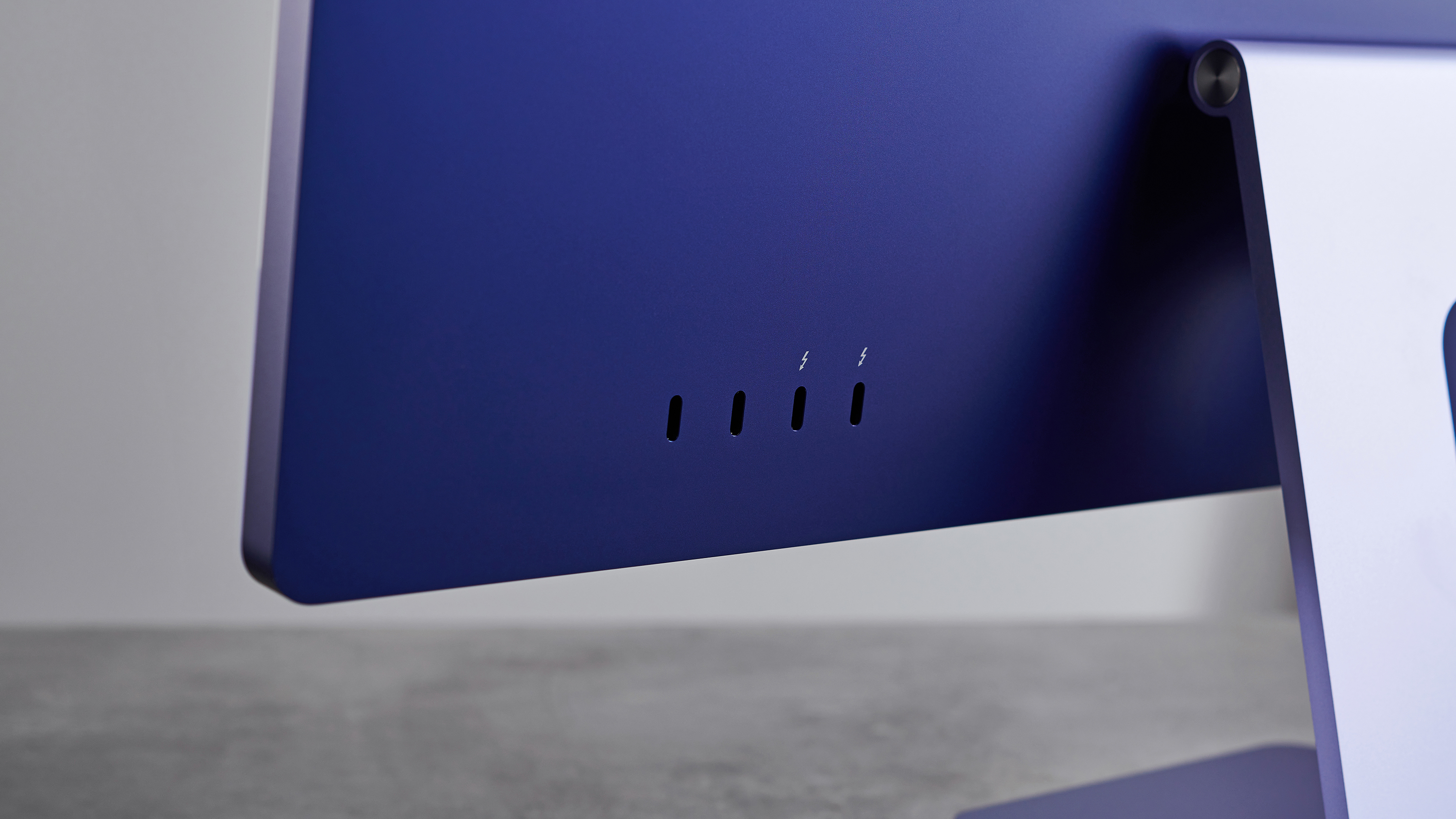
The simplicity of the port selection means the back of the iMac looks neat and stylish, but it once again means that if you have peripherals that don't use USB-C connectors, you’ll need an adaptor. And, if you go for the base model of the iMac, you may find that just two ports aren't enough – and on this model there’s also no Ethernet port in the power adaptor.
This means you’ll need to rely on a wireless internet connection, although this shouldn't be an issue for most people, as all models of the new iMac (24-inch, 2021) come with Wi-Fi 6 support. If you do require a wired connection you’ll again need to buy an adaptor (or consider getting an iMac model with the Gigabit Ethernet port built into the power supply).
The new and improved screen of the iMac (24-inch, 2021) is another highlight. Apple has shrunk the bezel around the screen by almost 50%, which not only allows the new iMac to have a larger 24-inch display without being much bigger in overall size than the 21.5-inch model, but also makes the new iMac feel much more modern and contemporary; while its competitors were coming out with ever smaller bezels around the screen, the previous iMac, with its chunky borders, was starting to look outdated, so we’re very glad Apple made this change.
The screen itself is gorgeous, with a 4.5K Retina resolution that equates to 4480 x 2520 and a pixel density of 218ppi (pixels per inch). Compared to the previous model’s 4K (4096 x 2304) resolution, you’re getting a much improved display that offers the best image quality we’ve seen in a recent all-in-one PC.
The screen also offers 500 nits brightness, and supports the P3 wide color gamut, which delivers bright, vibrant and accurate colors. Images really do look impressive on this screen, and it means the iMac (24-inch, 2021) is a viable PC for photo editing and video editing,
During our time with the new iMac (24-inch, 2021), several people walked by and made approving comments about its design, which is always a good sign. Most importantly of all, though, people recognized it as the new iMac, showing that despite all the cosmetic changes Apple has made, it's succeeded in keeping the distinct iMac look and feel.
Also, if you’re worried about the colorful look being a bit too garish or childlike, don’t be. We chose the purple version for our review, and rather than being too bold it was a nice, subtle, pastel-like shade. Of course, you can also go for the classic silver color if you prefer a more understated look for an office.
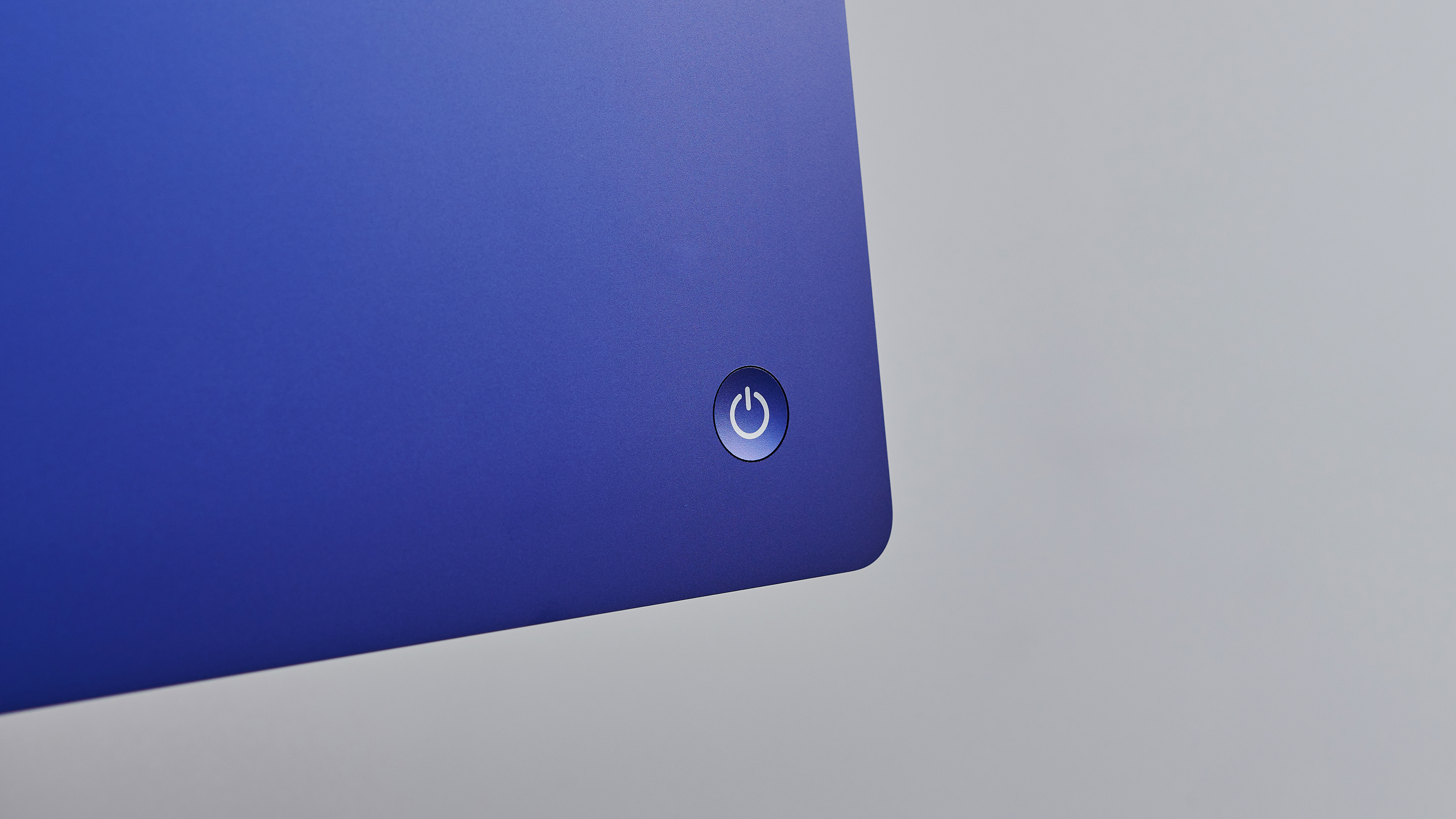
Performance
Here’s how the iMac (24-inch, 2021) performed in our suite of benchmark tests:
Cinebench R23 CPU: Single-Core: 1,489; Multi-core: 7,754
Geekbench 5 Single-Core: 1,725; Multi-Core: 7,650
Handbrake (1080p, Fast): 24.5fps
Blender Classroom: 947 seconds
Blender fishy_cat: 488 seconds
PugetBench Photoshop: 649 points (using Rosetta 2)
PugetBench Premiere Pro: 429 points (using Rosetta 2)
It’s not just on the outside that Apple has made big changes to the iMac (24-inch, 2021), as this is the first iMac to run on the Apple M1 chip. This is the same chip that powers the Mac mini (M1, 2020), MacBook Pro 13-inch (M1, 2020) and the MacBook Air (M1, 2020), and replaces the Intel processors that previously powered the iMac.
Apple's move from Intel to its own silicon was a bold one, but one that we feel has paid off, with the other M1 devices all impressing us with their performance. In fact, the MacBook Air (M1, 2020) currently sits atop our best laptop 2021 buying guide.
According to Apple, the move to the M1 chip means the 2021 iMac is up to 85% faster than the previous iMac that was based on Intel silicon. Meanwhile, Apple claims that the iMac will have up to 2x faster GPU performance than the fastest integrated GPU, something we'd been a bit skeptical of due to the existence of more powerful AMD APUs, and which we explore further in our in-depth M1 tests.
Still, even before we unpacked this iMac we had a decent idea of how it would perform: this is because the M1 chip inside it is exactly the same as the ones inside its other M1 products.
So, you get the choice of an M1 chip with an 8-core CPU (with four performance cores and four efficiency cores) and either a 7-core or 8-core GPU – the same options you get with the M1 MacBooks and Mac mini.
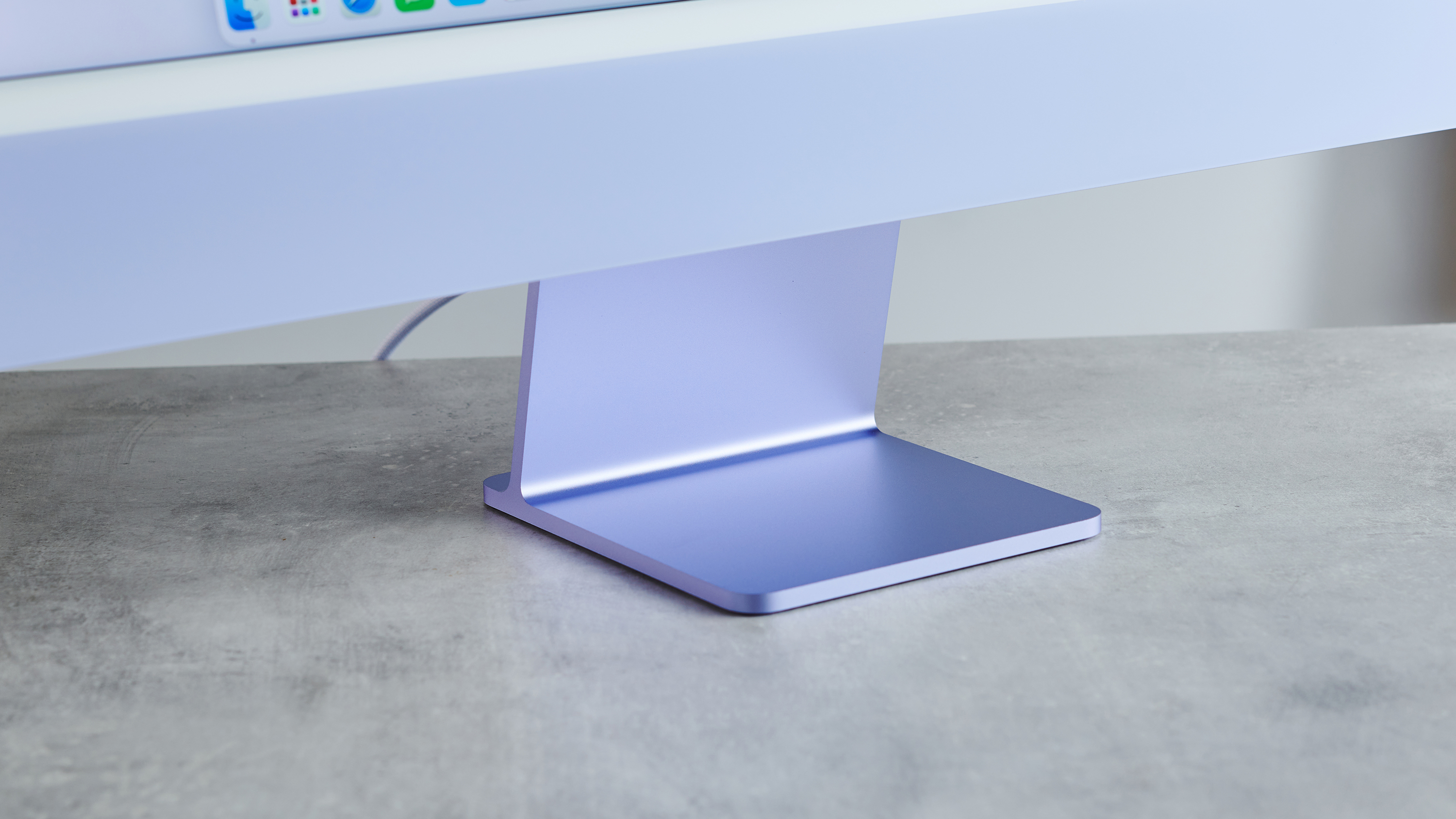
The review sample we were sent comes with the full 8-core CPU and 8-core GPU, along with 16GB of RAM, making it the highest-specced iMac you can get, so our experiences of the 2021 iMac are what you can expect with the more expensive models. However, for most day-to-day usage you may not notice a big performance difference if you go with the 7-core GPU model.
As on previous M1-powered Macs, macOS Big Sur starts up quickly and generally feels very sprightly – even with numerous apps open at once, flicking between them was fast and smooth. Apple has continued to do a great job of getting big third-party apps, such as Adobe Photoshop and Microsoft Office, to support the M1 chip, and along with all Apple apps, many now run natively on the M1.
As for older apps that don't yet have an M1 version, you should still be able to run these without much issue thanks to Apple’s Rosetta 2 tool, which enables apps made for Intel hardware to run on M1 Macs with a minimum of issues or performance degradation. On the whole, it does an impressive job, and you’d be hard pushed to know if an app was running via Rosetta 2.
The SSD is nice and speedy as well, and not only does this mean that macOS Big Sur and its various apps load up quickly, it means file transfers are incredibly fast – we moved a 3GB folder of files from an external hard drive to the iMac’s storage in under five seconds.
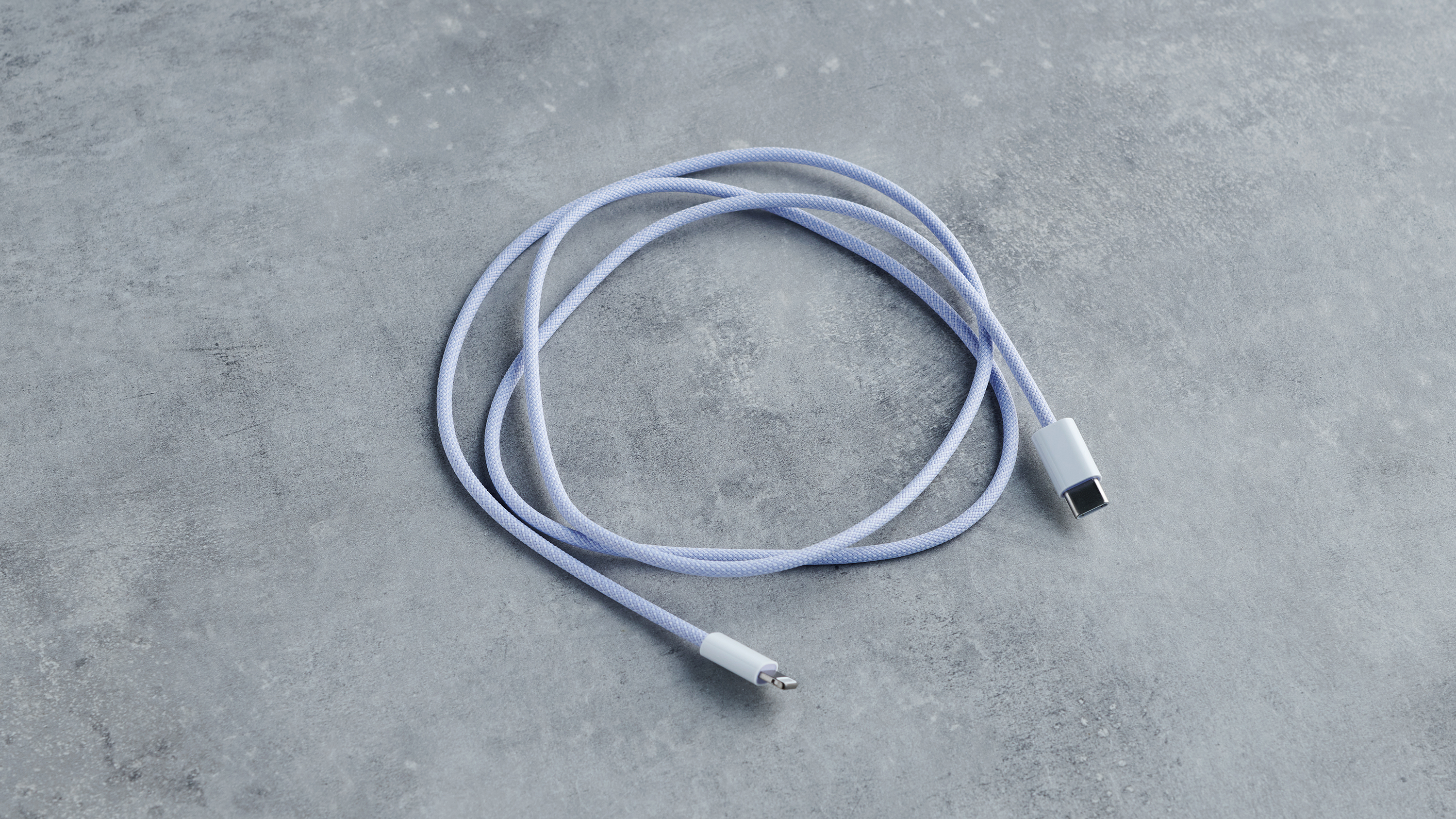
To put the iMac (24-inch, 2021) through its paces, we loaded up Final Cut Pro (which is now an M1-native app) and did some editing on an 8K video. This is intensive stuff, but like the MacBook Pro 13-inch (M1, 2020), the iMac performed very well. Scrubbing through 8K content, and previewing and editing clips, were all handled smoothly, and at no point did the fan cooling system of the iMac kick in and begin distracting us. While video-editing professionals may want to stick with the 27-inch iMac (or wait to see what Apple brings out next), due to the added performance that a dedicated GPU would bring, the iMac (24-inch, 2021) does an excellent job for hobbyists looking to edit their home videos. Thanks to the likes of YouTube and Twitch, anyone can be a content creator these days, and the iMac (24-inch, 2021) does an excellent job of meeting the needs of such users.
We have to give a shoutout to the 2021 iMac’s screen as well: 8K content looks great on it, and as it’s 4.5K, it means you can watch 4K content in full resolution without having to go full-screen. The bright and vibrant screen made working on the iMac a joy, and that added extra space over the 21.5-inch model really helps as well, as the macOS desktop doesn't feel too crowded.
The screen isn’t touchscreen, however, which probably isn’t a surprise, as no iMac has come with a touchscreen. However, we kept on wanting to use our hands on it; maybe it’s because an increasing number of all-in-one PCs come with touchscreens, or maybe it’s because the iMac increasingly looks like a giant iPhone, but having touchscreen controls would bring another level of interactivity to the iMac. Maybe that's something for a future update.
Unlike the 27-inch iMac, there’s no option to have the nano-texture glass finish on the display, which was first introduced on Apple's Pro Display XDR monitor, and which prevents glare and reflections showing on the screen no matter what light conditions you’re working in. It was an expensive addition to the 27-inch iMac, costing an extra $500 / £500 / AU$750, but the results really were impressive.
The screen of the 24-inch iMac does have anti-glare coating, and it does a decent enough job, but it’s not quite as impressive as the nano-texture finish.
The speakers in the 2021 iMac, which Apple claims are the "best speakers ever in a Mac" compliment the screen well. There are two pairs of force-cancelling woofers for deep bass notes, and these use the same tech found in MacBooks, which allows for bass sounds without vibrating the thin device they're coming from.
Spacial audio with Dolby Atmos is also included, and overall the sound quality of the iMac is very good, easily offering room-filling volumes without distortion. While the bass was a little lacking, which led to slightly thin-sounding audio with some music, the clarity was fantastic, with the audio the iMac produces far outperforming similar speakers in rival all-in-ones. For most people, there’ll be little need to hook up external speakers to the iMac.
There’s also a studio-quality three-mic array, which produces some excellent results thanks to its advanced noise-cancellation feature. There’s also beamforming, so the mics can pick up your voice clearly wherever you’re sitting in relation to them.
As with other M1-powered Macs, the iMac (24-inch, 2021) can also run iOS and iPadOS apps and games, giving you an enormous library of software and games to choose from. Many games designed for iPhones are pretty visually impressive, and the iMac (24-inch, 2021) does a good job of presenting them on the big screen.
As we've mentioned, more of us are also becoming content creators in our spare time, and if you’re a budding streamer, the fact that you can broadcast in such high quality from the iMac, rather than having to invest in external hardware, will certainly be appealing.
In our day-to-day use of the iMac we were impressed with the performance, although not surprised, based on our previous experiences with the M1 chip. Our benchmark tests actually showed how closely the iMac (24-inch, 2021) matches the performance of other M1-powered Macs. For example, the Cinebench R23 CPU test scored 7,754, pretty much the same as the 7,590 scored by the MacBook Pro 13-inch (M1, 2020), and almost exactly the same as the 7,755 scored by the Mac mini.
The similarities in performance between the iMac (24-inch, 2021) and the other M1 Macs leads to an interesting dilemma. If performance isn't a major factor in your choice of machine, it then boils down to form factor and price. Want the power of the iMac but in a laptop? Get the MacBook Air or MacBook Pro 13-inch instead. Or, if you want an all-in-one PC that can handle your creative workflow as well as a 13-inch MacBook, then you could buy the iMac in complete confidence.
However, this also means that the iMac’s biggest competitor isn’t something like the Surface Studio 2, but the Mac mini. You see, the Mac mini is a heck of a lot cheaper than the iMac (24-inch, 2021) at $699 / £699 / AU$1,099 – so if you already have a great monitor, then why buy the iMac when for almost half the price you could get the Mac mini and enjoy the same level of performance?
Sure, it’s not an all-in-one, but the Mac mini is so small that you could easily hide it behind a monitor anyway, essentially turning it into one.
So, the only reason to get the iMac over the Mac mini is if you really love the screen and overall design. That’s a fair enough reason, but with the Mac mini offering such good performance and such good value, it means some people would be better off getting that instead. Has Apple done itself a bit of a disservice by making such a great product in the Mac mini? Perhaps.
However, the iMac’s screen really is stunning, and that’s not something you get with the Mac mini, while the mini also doesn’t come with the webcam, microphones or speakers that the iMac has; factor those in, and the iMac (24-inch, 2021) becomes much better value, relatively speaking.
The 4.5K Retina display is the highest-resolution display that comes with an M1-toting Mac, and we were pleased to find that in our time with the iMac the extra demands of that high resolution didn’t have an impact on performance.
Webcam
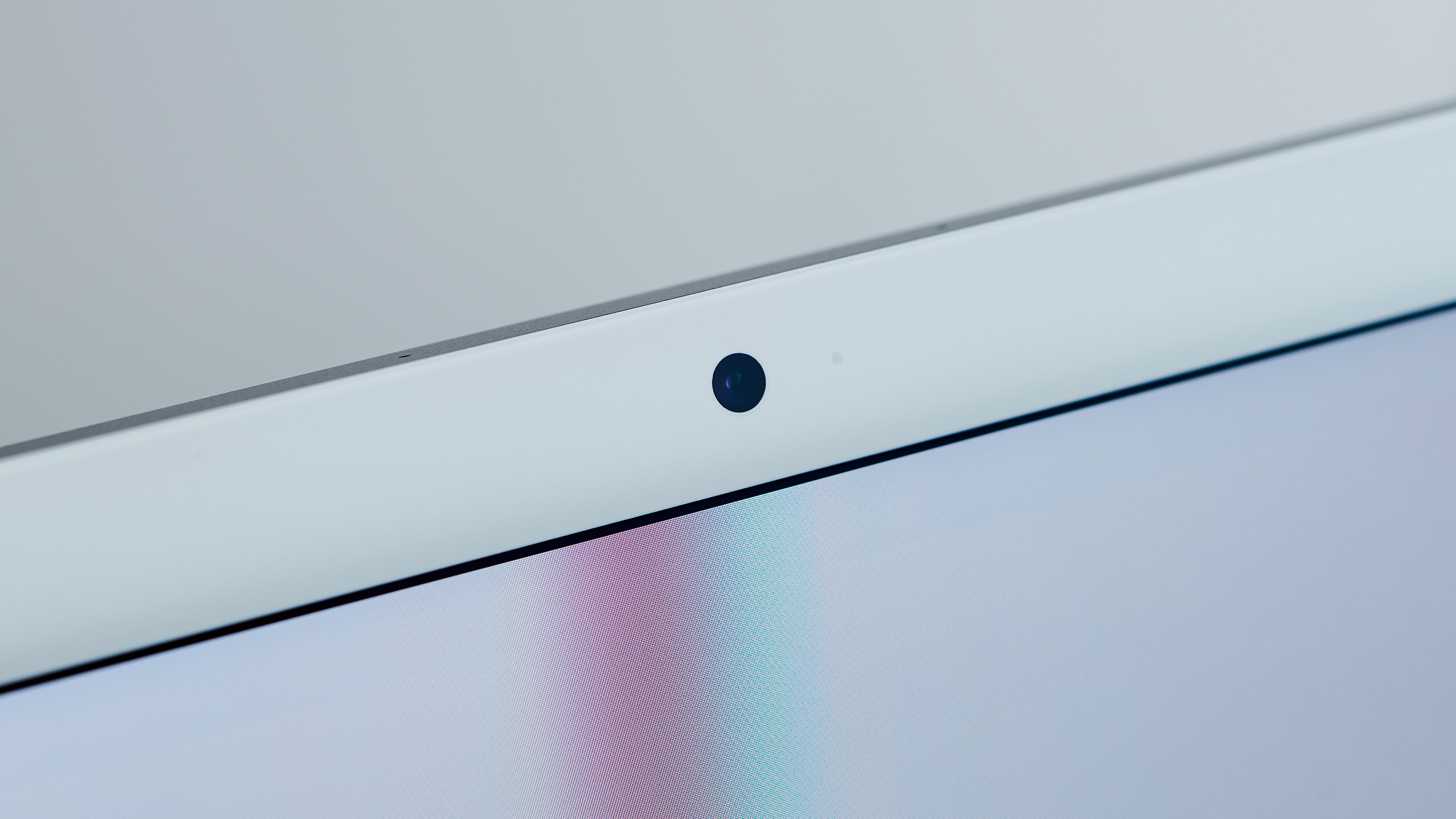
The iMac (24-inch, 2021) webcam has also been improved. It’s a 1080p FaceTime camera, which is an instant upgrade over the 720p camera in the 21.5-inch model. Along with the resolution boost, it has a larger sensor for better low-light performance, while the advanced image signal processor (ISP) feature of the M1 chip boosts image quality further. This leads to a generally excellent image from the built-in webcam, with excellent colors, high clarity and very little lag.
The improvements to the webcam and microphones are particularly important with so many people working from home these days, and relying heavily on video calling for both professional and social purposes. If you’ve found yourself taking part in more Zoom or Skype calls with friends, family or work colleagues, then the excellent webcam and microphones of the iMac will be a major selling point.
Should I buy the iMac (24-inch, 2021)?
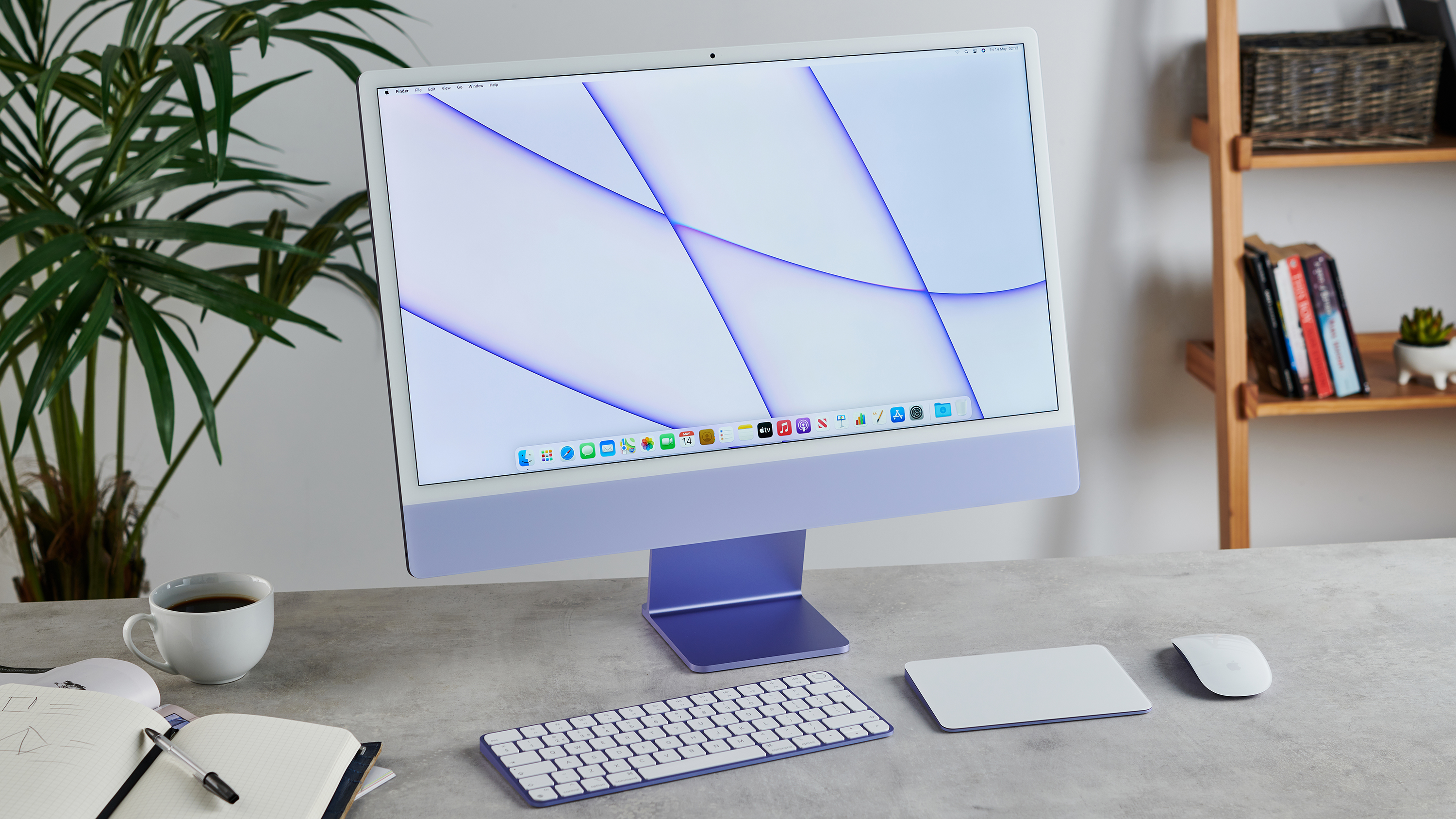
Buy it if...
You want the best all-in-one PC
The iMac (24-inch, 2021) is the best all-in-one PC we’ve tested. A great new design, excellent performance and fair price tag means this is the all-in-one to get.
You’re a budding content creator
The compact size and colorful design make this a brilliant PC for social media fans looking to get into streaming, and the excellent webcam and microphones mean you can get going without having to invest in peripherals.
You want an excellent screen
Part of the appeal of the 2021 iMac over the Mac mini is its gorgeous 4.5K screen. From playing games and watching movies to editing photos and videos, the new, larger screen is a delight.
Don't buy it if...
You’re on a budget
The iMac (24-inch, 2021) isn’t the most expensive all-in-one out there, but if you want to save some money, the Mac mini is a lot cheaper, and offers the same performance; you miss out on that lovely screen, though.
You need heavy-duty graphics
For any day-to-day task, and most photo and video editing, the iMac does a great job. However, its integrated graphics can’t compete with a dedicated GPU or an external GPU, neither of which the iMac (24-inch, 2021) supports.
You want a PC that you can upgrade
Most all-in-one PCs are difficult to upgrade yourself, and the iMac is particularly difficult. If you like having the option to upgrade your RAM, storage and other components later, consider a desktop PC.
- These are the best all-in-one PCs of 2021

Matt is TechRadar's Managing Editor for Core Tech, looking after computing and mobile technology. Having written for a number of publications such as PC Plus, PC Format, T3 and Linux Format, there's no aspect of technology that Matt isn't passionate about, especially computing and PC gaming. He’s personally reviewed and used most of the laptops in our best laptops guide - and since joining TechRadar in 2014, he's reviewed over 250 laptops and computing accessories personally.
